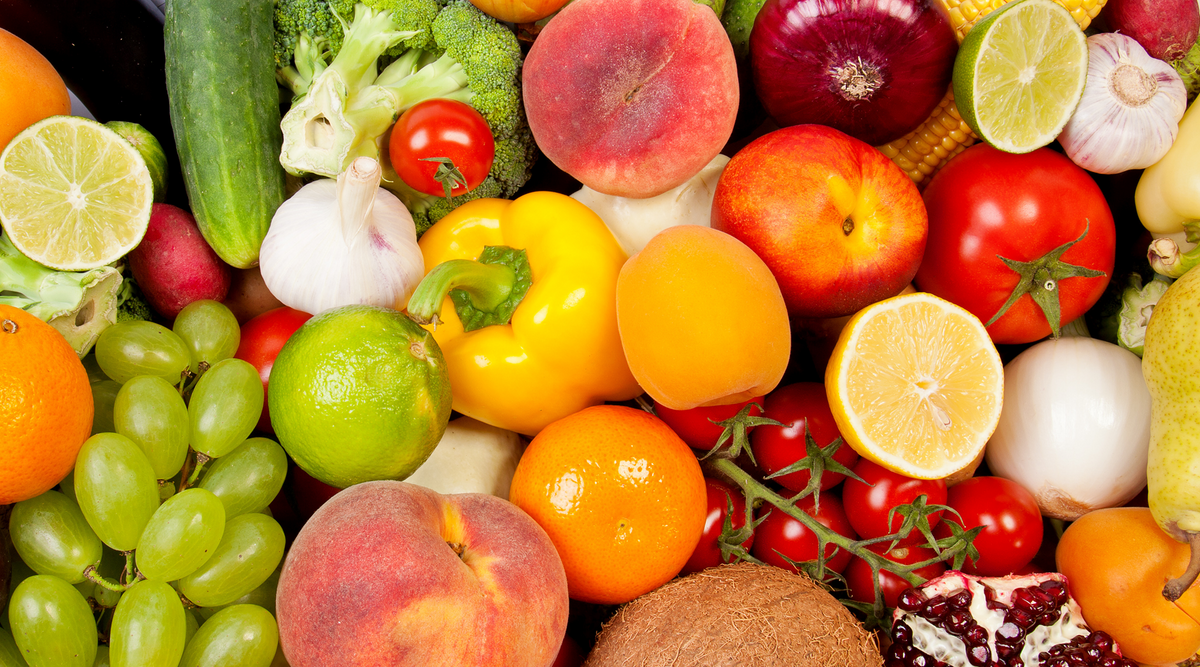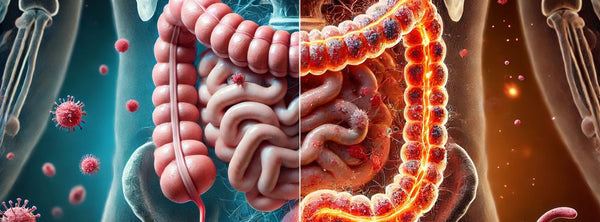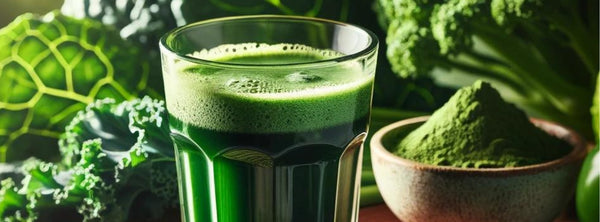
What is Fibre?
Fibre is all the components of plant based foods that are resistant to action of stomach acid and digestive enzymes. This resistance allows the fibrous parts of the plant to bypass absorption and move directly into the intestinal tract where it is involved in multiple actions that contribute to good health, toxin removal, improved immune function and our longevity.
Fibre is generally broken up into two different types Soluble and Insoluble. Within those two groups there are various sub-types of fibre; cellulose and lignins are insoluble fibres, while pectin, gums hemicellulose and mucilage are soluble fibres.
What is Soluble Fibre?
Soluble Fibre forms a gel like substance when mixed with water. This gel binds to toxins, bad cholesterol, xenoestrogens, hormones, fatty acids and enhances their excretion from the body. Good sources of soluble fibre include fruit, vegetables, legumes, psyllium, flax seeds, slippery elm bark, apple and citrus pectin, marshmallow root, yucca root, nopal cactus and guar gum.
What Is Insoluble Fibre?
Insoluble fibre is the roughage found in plants and acts like a broom cleaning the intestines while adding bulk to the stool making it easier to pass. Good sources of insoluble fibre include, fruit and vegetable skins, rice bran, psyllium, nuts, seeds and wheat bran.
The Health Benefits of Fibre
Protects against Cardiovascular Disease: Soluble fibre binds to LDL (bad) cholesterol and removes it from the body. This simple action reduces the total cholesterol and reduces a persons risk of heart disease. Fibre has also been shown in clinical studies to lower blood pressure and triglycerides, prevent atherosclerosis, ischemic heart disease, lower elevated homocysteine and the marker for inflammation C- reactive protein.
Improves Bowel Motion: Insoluble fibre softens the stool and increases the time taken for the faeces to pass through the intestines. This helps to alleviate constipation, promotes regular bowel motion, removes toxins and softens the stool, providing relief for sufferers of haemorrhoids and anal fissures. Fibre has also shown to prevent appendicitis and diverticulosis, while helping to heal Leaky Gut Syndrome.
Preventing and controlling Diabetes: Soluble fibre helps to regulate blood sugar levels, by reducing glucose absorption into the blood stream. Resulting in reduced spikes in blood sugar levels for both type 1 and 2 diabetes sufferers and pre-diabetics. Fibre may also help to prevent insulin resistance.
Weight Management: Both soluble and insoluble fibre help control appetite and weight management by increasing a sense of fullness and the time it takes for glucose to be absorbed. When glucose is absorbed at a slower rate, insulin secretion is reduced as are the hormones that tell the brain that you are hungry. Another added benefit of feeling full is that you don't feel hungry, thus less calories are consumed.
Intestinal pH Balance: Insoluble fibre improves the intestinal pH resulting in a better environment for the beneficial gut bacteria to reside
Cancer Prevention: Soluble fibre and insoluble fibre helps to prevent a variety of cancers including colon, endometrial, oesophageal, prostate, stomach and breast cancers. This is achieved via multiple mechanisms including removing toxins that cause intestinal cell damage, binding to and removing oestrogen, reducing obesity and providing short chain fatty acids that are the food that the intestinal cells need to remain strong and healthy.
Removing Toxins: Both soluble fibre and insoluble fibre aid in the removal of a variety of toxins, microorganisms and parasites, by binding to then and preventing them from adhering to the intestinal wall.
Immune Support: Some fibres act as prebiotics, which is food for the beneficial gut bacteria or microbiome. These bacteria help support and strengthen the gut based immune system, which makes up 70% of our total immune system. Prebiotic fibres include Inulin, Arabinogalactan, Pectin, Nopal Cactus and Psyllium hulls.
Did You Know that approximately 80% of the colon cells and 50% of small intestines cells get their food supply from what we eat. The only food that these cells can survive on is fibre. What occurs is that the beneficial gut bacteria eat the fibre and produce short chain fatty acids, which becomes the intestinal cells food. Low levels of short chain fatty acids can result in numerous health conditions including diverticulosis, colon cancer, obesity, inflammatory bowel disease, diabetes, irritable bowel disease and cardiovascular disease.
How To Get More Fibre Into The Gut?
Obviously the best way to increase fibre intake is eat a greater variety of plant based foods mentioned in the table below. But there are times when that may not be possible, this is when a fibre supplement such as Intestinal Maintain is the best course of action to increase fibre levels. Intestinal Maintain contains a variety of soluble and insoluble fibres including pectin, gums, mucilage, cellulose, lignin's and hemicellulose.
Good Sources of Fibre?
All plant based foods contain fibre below is a sample list of foods with high levels of fibre.
| Almonds | Chia Seeds | Orange |
| Amaranth | Chickpeas | Pear |
| Apples | Coconut | Pea |
| Artichoke | Corn | Pinto Beans |
| Asparagus | Dark Chocolate | Popcorn |
| Avocado | Dates | Prunes |
| Bake Beans | Fennel | Psyllium Hulls |
| Banana | Figs | Quinoa |
| Barley | Flax Seed | Raspberries |
| Beetroot | Jerusalem Artichoke | Rice Bran |
| Blackberries | Kale | Slippery Elm Bark |
| Broccoli | Kidney Beans | Split Peas |
| Brown Rice | Konjac Root | Spinach |
| Brussels Sprouts | Lentils | Strawberries |
| Buckwheat | Lima Beans | Sweet Potato |
| Capsicum | Millet | Turnip |
| Carrots | Oats | Wheat Bran |
| Cauliflower | Okra | Yucca |
Water and Fibre an Essential Combination
When increasing daily fibre it's important to also increase fluid intake, in particular water. Water softens the stool making it glide through the intestines with ease. Fibre absorbs water and if fluid levels in the intestines are diminished the stool becomes hard and difficult to pass and can lead to constipation. So water is not only good for the kidneys, but also the colon.
Will fibre cause flatulence?
Yes, for some people fibre can cause gas especially when the intestines are not use to an increase in dietary fibre. Conditions like Irritable Bowel Syndrome, an over growth of detrimental organisms or low levels of beneficial bacteria can all lead to an increase in flatulence when fibre is increased. If your current diet is low in fibre and the above health conditions have been ruled out then gradually increase fibre levels to help avoid too much wind.
The information provided here is of a general nature intended for educational purposes only. We make no claims to diagnose, treat, prevent, alleviate or cure illnesses or diseases with any information or product stated. With any health issue we suggest you consult your healthcare professional before undertaking any health treatment.
I hope you found this blog useful and if you did please leave a comment or share on social media.
Thanks and have a great day
References:
- Williams BA, Mikkelsen D, Flanagan BM, Gidley MJ. "Dietary fibre": moving beyond the "soluble/insoluble" classification for monogastric nutrition, with an emphasis on humans and pigs. J Anim Sci Biotechnol. 2019;10:45.
Published 2019 May 24. doi:10.1186/s40104-019-0350-9
- Lattimer JM, Haub MD. Effects of dietary fiber and its components on metabolic health. Nutrients. 2010;2(12):1266-1289. doi:10.3390/nu2121266
- Evans CEL. Dietary fibre and cardiovascular health: a review of current evidence and policy. Proc Nutr Soc. 2020 Feb;79(1):61-67. doi: 10.1017/S0029665119000673. Epub 2019 Jul 3. PMID: 31266545.
- Yang J, Wang HP, Zhou L, Xu CF. Effect of dietary fiber on constipation: a meta analysis. World J Gastroenterol. 2012;18(48):7378-7383. doi:10.3748/wjg.v18.i48.7378
- Reynolds AN, Akerman AP, Mann J. Dietary fibre and whole grains in diabetes management: Systematic review and meta-analyses. PLoS Med. 2020 Mar 6;17(3):e1003053. doi: 10.1371/journal.pmed.1003053. PMID: 32142510; PMCID: PMC7059907.
- Howarth NC, Saltzman E, Roberts SB. Dietary fiber and weight regulation. Nutr Rev. 2001 May;59(5):129-39. doi: 10.1111/j.1753-4887.2001.tb07001.x. PMID: 11396693.
- Holscher HD. Dietary fiber and prebiotics and the gastrointestinal microbiota. Gut Microbes. 2017;8(2):172-184. doi:10.1080/19490976.2017.1290756
- Shankar S, Lanza E. Dietary fiber and cancer prevention. Hematol Oncol Clin North Am. 1991 Feb;5(1):25-41. PMID: 1851150.
- >Kieffer DA, Martin RJ, Adams SH. Impact of Dietary Fibers on Nutrient Management and Detoxification Organs: Gut, Liver, and Kidneys. Adv Nutr. 2016;7(6):1111-1121. Published 2016 Nov 15. doi:10.3945/an.116.013219
- Schley PD, Field CJ. The immune-enhancing effects of dietary fibres and prebiotics. Br J Nutr. 2002 May;87 Suppl 2:S221-30. doi: 10.1079/BJNBJN/2002541. PMID: 12088522.




